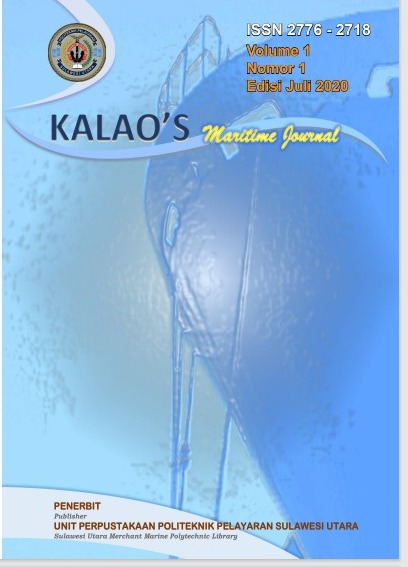The Importance Of Cross Cultural Understanding and Awareness In English Language Teaching
DOI:
https://doi.org/10.69754/kalaos.v4i1.44Keywords:
Cross-Cultural Understanding, Cultural Awareness, English Language TeachingAbstract
Interrelated, interconnected and influential describe the relationship between language and culture. So that in the process of learning both languages can not be separated. English as an international language has the potential to be associated with culture because everyone from all over the world from different countries even different cultural backgrounds use it to connect with the outside world. Nowdays, English is everywhere and even learned everywhere. In this connection knowledge and understanding as well as cultural awareness become some of the important things to be integrated into learning. This article aims to reveal the importance of cross-cultural understanding and awareness in teaching English. This article was written using a qualitative research design and collecting data from reference observations from the several sources, which were then discussed in a narrative manner so as to discover the importance of cross-cultural understanding and awareness in teaching English.
Downloads
References
Brown, H.D. (1994). “Principles of Language Learning and Teaching”. The USA: Prentice Hall Regents.
Brown, H.D. (2000). Principle of Language Learning and Teaching, 4th Edition. White
Chastain, K. (1988). Developing Second- Language Skills, the USA: HBJ Publishers Community. California: Sage Publications, Inc.
Collins. (2020). Cultural awareness definition. Collins English Dictionary Complete & Unabridged (10thed.). Retrieved on May 18, 2020 from http://dictionary.reference.com/browse/culturalawareness.
Condon, E. C. (1973). Introduction to Cross Cultural Communication. New Brunswick, NJ: Rogers University Press
Guest, M. 2002. A Critical Checkbook for Culture Teaching and Learning. ELT Journal 56/2: 154–61.
Jandt, F.E. 2004. An Introduction to Intercultural Communication: Identities in a Global Community. California: Sage Publications, Inc.
Jenkins, Orville Boyd. 1999. Culture, Learning, and Communication. Retrieved on May 18, 2020 from http://www.faculty.ed.umuc.edu/-jmatthew/lose.htm.
Kirl, John. (2001). Language, Culture, and Division. Retrieved on May 18, 2020 from < http://www.forthnoght,org/POLCOLS/POLO6396.htm.
Lessard-Clouston, Michael. 1997. Towards an Understanding of Culture in L2/FL Education. The Internet TESL Journal, vol. III, No.5.
Littlewood, W. (2000). “Do Asian Students Really Want to Listen and Obey?” in ELT Plain, New York: Longman Inc.
Lyons, John. 1981. Language, Meaning and Context. Fontana.
McKay, S. L. 2002. Teaching English as an International Language: Rethinking Goals and Approaches. New York: Oxford University Press.
Parsons, T.W. 1962. Cross-Cultural Understanding: Another Look. US: Association for Supervision and Curriculum Development.
Post, Ron & Ilyse Rathet. (1996). On Their Own Terms: Using Student Native Culture as Content in the EFL Classroom. English Teaching Forum Online July 1996. Retrieved on May 18, 2020 http://exchange.state.gov./forum/vols/ vol34/no3/p12.htm.
Renner, C.E. (1994). Muticultural Methodologies in Second Language Acquisition: Integrating Global Responsibility, Peace Education and Cross-Cultural Awareness. Retrieved on May 18, 2020 from http://www.midtesol.org/articles/peedi ti.htm.
Sapir, E. (1921). Language. New York: Harcourt Brace.
Spencer-Oatey. 2012. What is Culture? a Compilation of Quotations. Retrieved from: http://www2.warwick.ac.uk/fac/soc/al/globalpad/openhouse/interculturalskill s/global_pad_-_what_is_culture.pdf
Sugirin. (2009). Cross-Cultural Understanding: What Every EFL Teacher Should Know. Yogyakarta: FS UNY.
Tanaka, S. (2006). English and Multiculturalism – from The Language User’s Perspective, RELC Journal, 37 (I), 47-66.
Tang, Romana. (1999). The Place of "Culture" in the Foreign Language Classroom: A Reflection. The Internet TESL Journal, Vol. V, No. 8, August 1999. Retrieved on May 18, 2020 from http://iteslj.org/Articles/Tang- Culture.html.
Wibowo, Wahyu. 2001. Manajemen Bahasa.
Jakarta: Gramedia Pustaka Utama.
Downloads
Published
How to Cite
Issue
Section
License
Copyright (c) 2020 Kalao’s Maritime Journal

This work is licensed under a Creative Commons Attribution-ShareAlike 4.0 International License.















